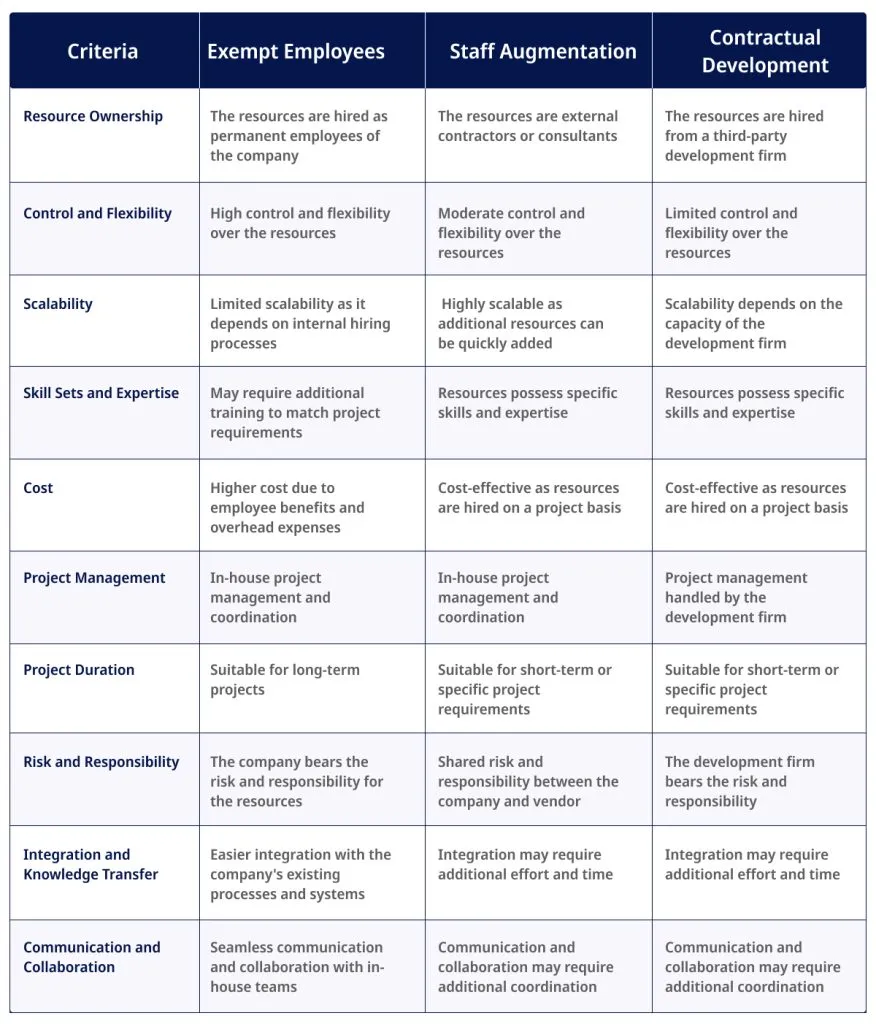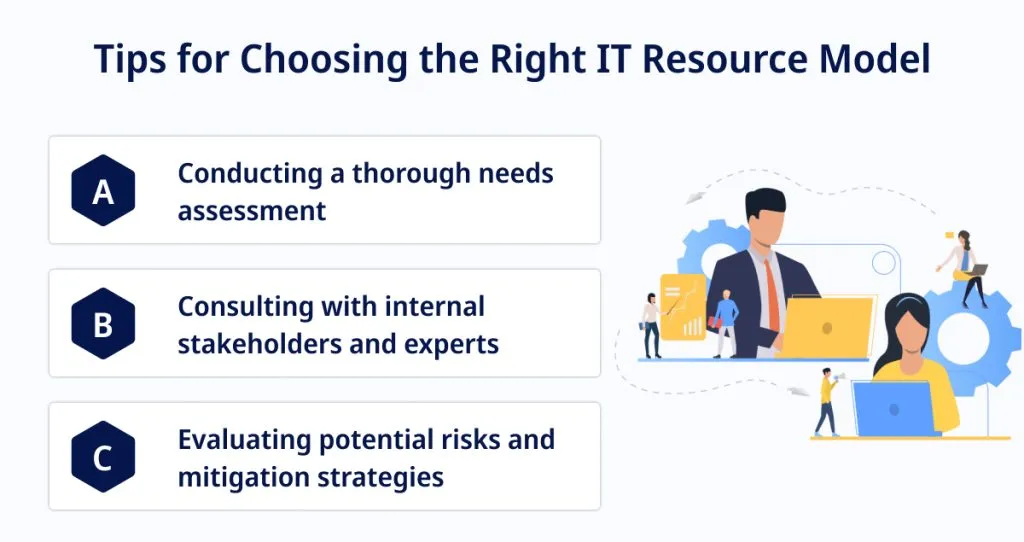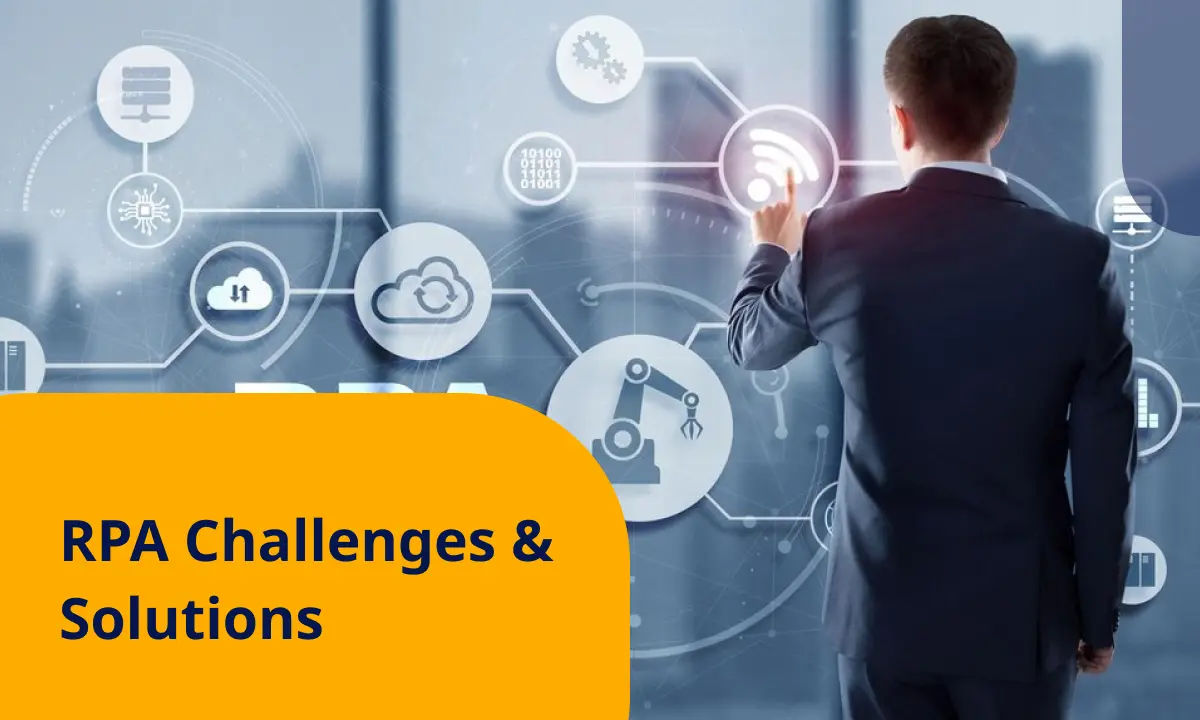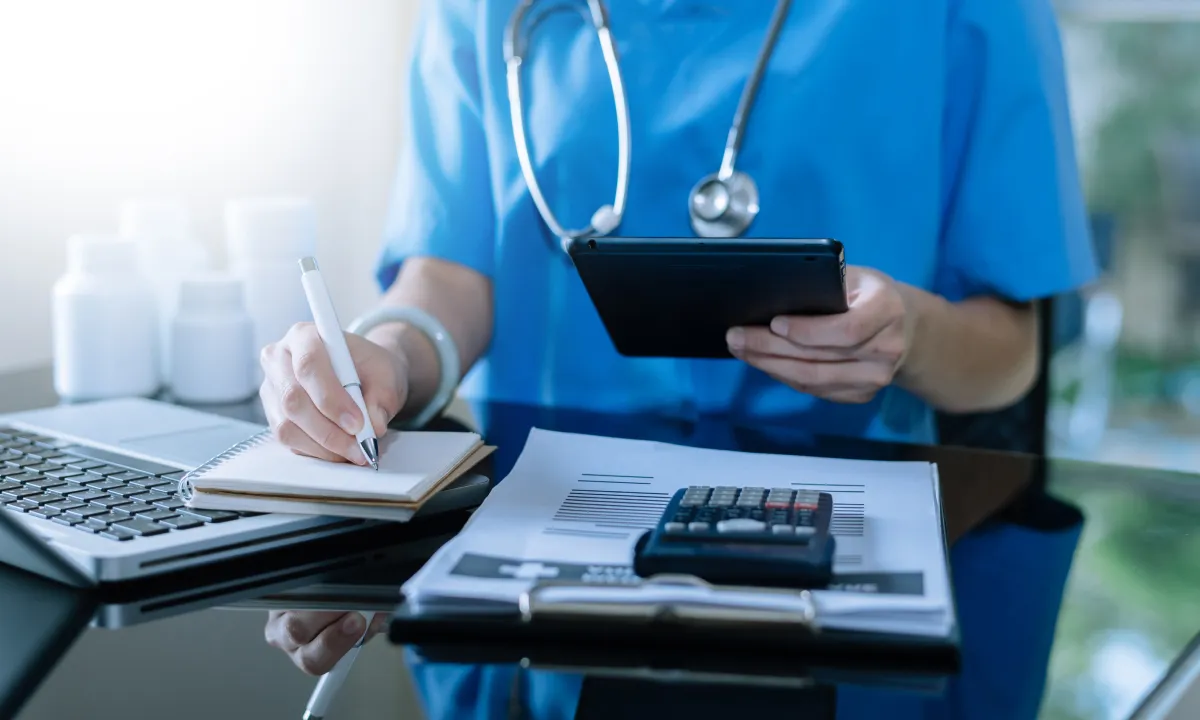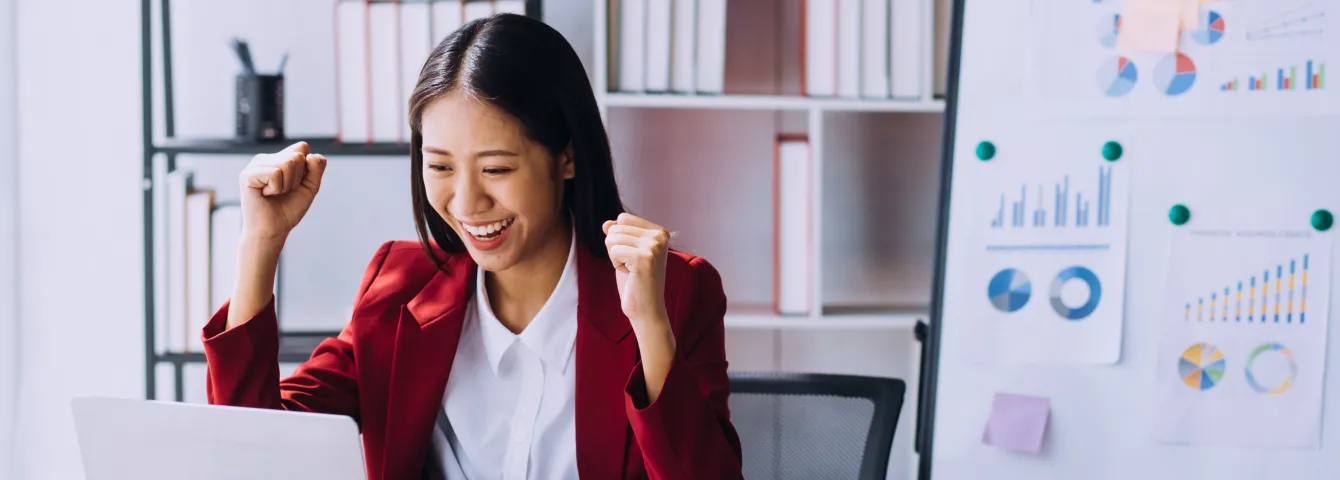Staying ahead of the curve in today’s time requires a skilled & adaptable workforce as the technology evolves rapidly.
But how do you choose the right approach?
In a world where talent scarcity & budget constraints are common pain points, making the wrong decision could have far-reaching consequences.
This is why it becomes crucial to explore the three options available i.e. Staffing, Staff augmentation, and Contractual development.
This blog post will help you understand the importance of selecting the right IT resource management model & how it can make all the difference in achieving your business goals.
Understanding Project Requirements
It is crucial to have a solid understanding of your project requirements before choosing the right IT resource model. This involves a series of steps, as discussed below.
1. Identifying the scope & nature of your IT project
You can better determine the type and level of resources needed by clearly understanding the project’s scope.
- Understand the specific goals & objectives
- Understand the complexity & scale of the project
2. Evaluating project timeline & milestones
You can effectively plan & allocate resources based on the project’s timeline. This involves:
- Determining the desired completion date of the project
- Breaking it down into smaller, manageable milestones
3. Analyzing the required skill sets & expertise
You can determine whether to hire a dedicated team, opt for staff augmentation, or consider contractual development by analyzing skill sets. This entails identifying the following:
- Specific technical skills
- Domain knowledge
- Experience needed
4. Defining project goals & expectations
By setting specific and measurable goals, you can align your IT resource management model choice with the project’s objectives. This involves the clear articulation of:
- Desired outcomes
- Deliverables
- Performance expectations
Discover the ideal resource model for your business.
Exploring Different IT Resource Models
Exploring different options is important when considering your project’s IT resource model.
1.Staffing Model
The traditional staffing model is where organizations hire permanent IT staff to handle their technology needs. This involves:
- Recruiting
- Onboarding
- Managing a team of in-house professionals
Here, organizations directly employ IT professionals who become part of their internal team.
These professionals work on various IT projects and tasks, providing ongoing support and maintenance for the organization’s technology infrastructure.
Pros and cons of hiring permanent in-house IT staff
There are several advantages to the staffing model.
- Better control & coordination of IT projects.
- Streamlined communication and team members can work closely with other departments.
- Develop a deep understanding of the organization’s systems & processes.
- Leading to more efficient troubleshooting & problem-solving.
However, there are also some drawbacks to consider.
- Hiring permanent in-house IT staff can be costly.
- Organizations may need help finding & retaining top talent.
- The staffing model may not be suitable for projects with fluctuating resource requirements or short-term engagements.
Examples of when the staffing model is suitable
- It is most suitable for organizations that have ongoing IT needs & require a dedicated team to manage their technology infrastructure.
- It works well for long-term projects or when there is a consistent demand for IT expertise within the organization.
- Organizations prioritizing close collaboration, knowledge transfer, and control over their IT operations may find the staffing model beneficial.
2. Staff Augmentation Model
The staff augmentation model involves supplementing your existing team with external IT professionals with specific skills and expertise.
Being a flexible approach allows organizations to fill skill gaps or expand their IT capabilities by temporarily hiring external professionals. It involves bringing in external experts who work alongside the existing staff for a specific duration or project.
Benefits & challenges of IT staff augmentation
There are various benefits of the IT staff augmentation model.
- It provides great access to a broader pool of specialized talent with specific skills & expertise.
- This enhances the quality & efficiency of project execution.
- It offers flexibility, as organizations can scale up or down based on project requirements.
- It also saves costs in the long run.
However, there are also challenges to consider.
- Integrating external professionals may require effective communication & collaboration strategies.
- Managing a blended team of internal & external resources may require additional effort.
Real-world examples of staff augmentation
- It is good for organizations with short-term project goals requiring specialized skills.
- It is beneficial when organizations must scale their workforce for a specific project or require additional resources to meet tight deadlines.
- It can be advantageous when organizations want to leverage external expertise to bring fresh perspectives & innovative ideas to their projects.
Also Read: Tech Staff Dilemma: Hiring Or Cutting? Decoding The Right Path
3. Contractual Development Model
The contractual development model entails engaging external contractors or development firms to handle specific IT projects or tasks.
These contractors are typically hired for a defined period and are responsible for delivering the agreed-upon outcomes within the specified timeframe.
Advantages & limitations of the contractual development approach
There are several advantages to utilizing the contractual development approach.
- Contractors often have extensive experience in their respective domains.
- Contractual development offers flexibility, as organizations can engage contractors for specific projects without the long-term commitment of hiring permanent staff.
However, there are limitations to consider.
- Communication & coordination may require additional efforts.
- Ensuring alignment with the organization’s goals and maintaining control over the project.
- Organizations must carefully manage the contractual relationship, including defining clear deliverables, timelines, and payment terms.
Instances where contractual development is the preferred choice
- Organizations with a project require specialized skills or technologies that are not available internally.
- Organizations that have a specific project with a defined scope and timeline.
- Organizations who want to mitigate the risks associated with hiring permanent staff for short-term projects.
Navigate IT resourcing with confidence.
Key Considerations for Decision-Making
When deciding on the right IT resource management model for your project, there are several important considerations to remember.
1.Budget Constraints
It is essential to assess the costs associated with each model and consider both short-term and long-term expenses.
- The staffing model involves hiring permanent in-house staff, which incurs salaries, benefits, training, and infrastructure expenses.
- Staff augmentation allows for temporary external hires, which may involve hourly or project-based rates.
- Contractual development involves engaging external contractors or development firms, and costs can vary based on the scope and complexity of the project.
It is also essential to consider the upfront costs and any potential hidden costs, such as recruitment fees, onboarding expenses, or additional charges for specialized skills.
Different resource models have varying cost implications over time. For example
The staffing model may involve higher upfront costs due to the investment in permanent staff. Still, it can provide long-term stability and cost savings if there is a consistent need for IT expertise within the organization.
Staff augmentation and contractual development offer more flexibility and scalability, allowing organizations to adjust their resources based on project requirements, potentially resulting in cost savings for short-term projects.
2. Project Flexibility & Adaptability
Flexibility refers to the ability to adjust & adapt to changing project requirements, timelines, and resource needs.
Moreover, Scalability & agility are crucial factors to consider when evaluating the flexibility of an IT resource model.
- Scalability refers to the ability to easily adjust the team size and resource allocation as the project evolves.
- Agile methodologies like Scrum/Kanban can enhance project flexibility by enabling iterative development and frequent feedback loops.
Staffing involves hiring full-time employees to work on your IT projects. This model provides high flexibility, as you have direct control over the resources and can efficiently allocate them to different projects based on their skills and expertise and can optimize IT Staffing Ratios to ensure the right balance of in-house and external talent
Staff augmentation involves supplementing your existing IT team with external resources temporarily. This model offers moderate flexibility as you can quickly scale up or down the team size based on project needs.
Contractual development involves outsourcing your IT projects to external vendors or contractors. This model provides a high level of flexibility as you can engage vendors with
specific expertise for different phases or components of your project.
3. Control & Oversight
Before choosing an IT resource management model, it is essential to assess the level of control you need over the execution of your projects.
- If you opt for an in-house staffing model, you have direct control over the entire project lifecycle, from planning to execution.
- If you pursue IT staff augmentation services, you have less direct control over project execution. While you still maintain control over the project’s overall direction, the day-to-day execution is largely managed by the augmented staff.
- In contractual development, you have the least control over project execution. The vendor takes responsibility for the entire project, from planning to delivery.
Ultimately, the right IT resource model for your organization depends on finding the right balance between control and external expertise. To help you make an informed decision:
- Assess your project requirements
- Consider the level of control you desire
- Evaluate the need for specialized skills
4. Talent Availability & Skill Gaps
The demand for IT talent often exceeds the supply, making it difficult for organizations to attract and retain top-notch professionals. The following factors play a crucial role in the decision-making process for suitable workforce management solutions:
- Salary expectations
- Career growth opportunities
- Work-life balance
To address this challenge, organizations must assess their current talent pool and identify skill gaps within their IT team. This analysis will help determine whether additional resources are required and what specific skills are needed to bridge those gaps effectively.
Once you have identified the skill gaps within your IT team, the next step is to evaluate which resource model can best address them.
Also Read: How To Choose Between Staff Augmentation, Outsourcing, & Dedicated Team
Three primary IT, resource management models are to consider: Staffing, Staff augmentation, and Contractual development.
Staffing provides long-term stability and allows for better integration within the company culture. However, it may be challenging to find and attract highly skilled professionals, especially if you are in a competitive job market.
Staff augmentation allows you to fill skill gaps and scale your team as needed quickly. It provides flexibility and access to specialized expertise without making long-term commitments to hiring full-time employees.
Contractual development is suitable for organizations that require specialized skills for a limited duration. It allows for cost-effective project execution and access to a broader talent pool.
However, it may require careful vendor selection and management to ensure successful project delivery.
Staffing vs Staff Augmentation vs Contractual Development: A Comprehensive Comparison
Illustrating Successful Implementation: Case Studies By ValueCoders
Whether for a short-term or long-term project, choosing between staffing, staff augmentation, or contractual development can be a critical decision.
Here, we present examples of some case studies done by ValueCoders ( a leading software development services provider in India since 2004)
It is a project management software for modern businesses built using DevOps tools, ASP.NET and JQuery. This solution allows you to keep track of the complete project from first proposal to final project deliverables.
You can quickly grow your current business network by implementing this solution, which is built using Angular, MongoDB, payment gateways, and many more. Here, you can define the transactions that interact with your assets.
Organizations can manage their recruitment & consulting process with this software, which is built using Java & MySQL. It has an intuitive interface provides users with an efficient way to look for job alerts, templates, recruitment process, etc.
Tips for Making the Right Choice
Choosing the suitable IT resource model is a critical decision as it can directly impact the success of your software projects.
Consider the following tips to ensure you make an informed choice:
Conducting a thorough needs assessment
You must conduct a comprehensive needs assessment before deciding on a specific IT resource management model. This involves evaluating your organization’s:
- Current & future requirements
- Project scope
- Timelines
- Budget
After understanding your specific needs, you can identify the skills, expertise & resources required to achieve your goals effectively.
Consulting with internal stakeholders & experts
It becomes crucial to consult with internal stakeholders & subject experts if you want to gain valuable insights & perspectives. You need to engage with the following persons to understand their expectations & requirements.
- Key decision-makers
- Project managers
- Department heads
Additionally, seek advice from IT professionals/consultants with experience implementing different IT resource models. Their expertise can provide valuable guidance & help you make an informed decision.
Evaluating potential risks & mitigation strategies
Every IT resource management model comes with its own set of risks & challenges. Hence, it becomes essential to evaluate those potential risks & develop appropriate mitigation strategies.
Consider factors such as:
- Resource availability
- Scalability
- Cost implications
- Impact on project timelines
By identifying and addressing potential risks in advance, you can minimize disruptions & ensure a smooth implementation of the chosen IT resource model.
Tailor your approach to IT resourcing.
Conclusion
So far, we have seen that choosing the right IT resource management model is a tough decision as it could affect the success of your projects. Staffing, augmentation, and contractual development each have advantages and considerations.
Staffing provides long-term stability and control, while staff augmentation offers flexibility and scalability. Contractual development allows for specialized expertise and cost-effectiveness.
However, the choice depends on your specific needs, budget & project requirements.
By carefully evaluating these factors and understanding the pros and cons of each model, you can make an informed decision that aligns with your organization’s goals and sets you up for success in the dynamic world of IT.
Moreover, you can take free consultation from our experts at ValueCoders.
Hire our dedicated software developers who deploy a suitable IT resource model in your project. Feel free to contact us today!





